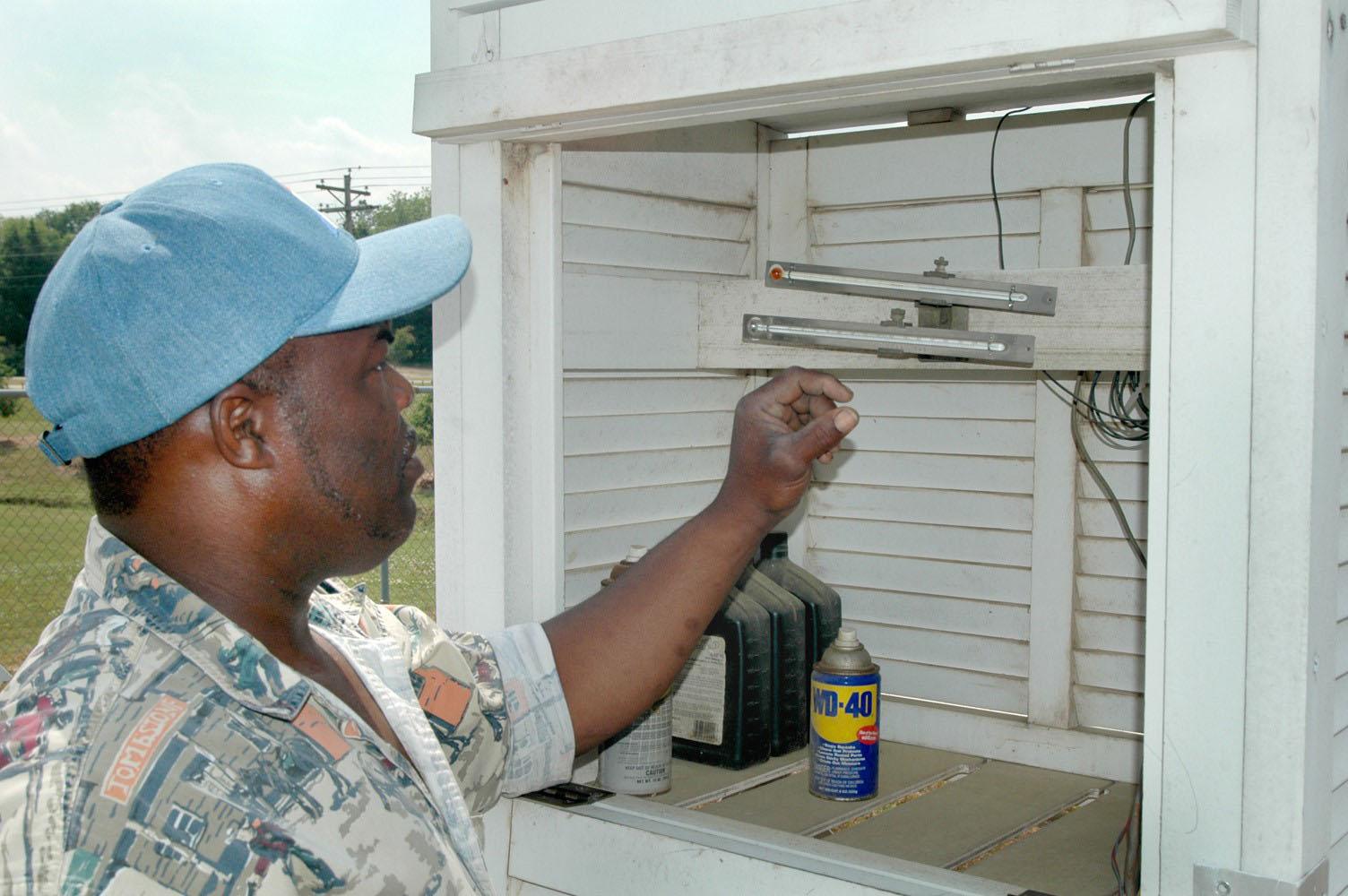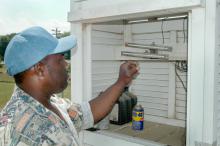Information Possibly Outdated
The information presented on this page was originally released on May 7, 2007. It may not be outdated, but please search our site for more current information. If you plan to quote or reference this information in a publication, please check with the Extension specialist or author before proceeding.
MSU weather station marks 125 years of service
MISSISSIPPI STATE -- Each morning Carl Blair, like many people, checks the weather, but his interest in the weather is part of a tradition that goes back 125 years.
Blair is an equipment operator for the Mississippi Agricultural and Forestry Experiment Station at Mississippi State University and his duties include recording data collected by National Weather Service equipment located on campus.
At 6:30 each morning, rain or shine, he gathers information on soil, water and air temperatures; evaporation rates; rainfall; and wind movement during the past 24 hours. Once collected, the data is sent to the National Weather Service in Jackson.
There are few other sites in the nation with 125 years of continuous weather data on record, said Alan E. Gerard, meteorologist in charge at the Jackson office of the National Weather Service.
“This type of information is what you need to investigate things like climate change.” Gerard said during May 3 ceremonies on the MSU campus marking the 125-year weather data collection partnership.
Knowledge of weather history is also an important part of crop research by MSU scientists, which is one reason there are also weather stations at most of the 16 MAFES sites around the state.
“The weather and agriculture are inseparable,” said Reuben Moore, MAFES associate director. “Mississippi soybean producers, for example, are planting about a month earlier than they were just a few years ago. The early planting has dramatically increased soybean yields and planting recommendations are based in part on weather history.”





